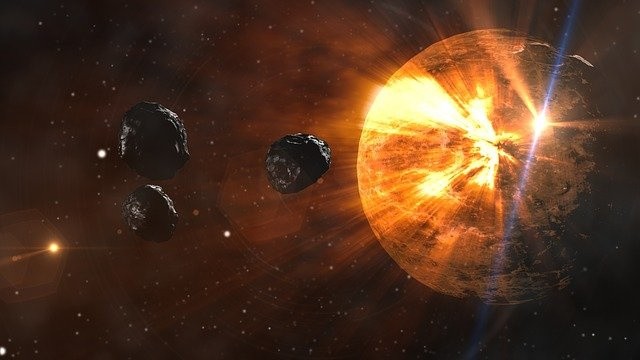
Discovery of the blueprint for life could have come from space in the form of asteroids that struck protean Earth is the supposed kick start billion of years ago.
They found two of the five components of DNA and RNA that should include these crucial elements that have yet to be found.
DNA Could Come From Space
It might be that DNA is formed on a meteorite; it shows that these genetic elements were present when it struck ancient Earth and crucial to a framework that led to life on a dust ball; reported Phys Org.
A group of researchers from NASA gives more proof that chemical reactions from space as a turning point in the evolution of life molecules.
All DNA and RNA that carry the commands for building and running every living thing on the planet contain five informational components known as nucleobases. To date, only three of the five extraterrestrial samples have been found.
However, recent research headed by Associate Professor Yasuhiro Oba of Hokkaido University in Hokkaido, Japan, revealed the final two nucleobases which had hitherto eluded scientists, cited Eurekalert.
What Are Nucleobases?
Nucleobases are organic compounds that correspond to the purines and pyrimidines groups. Yet, it is still unexplained why more kinds have not yet been identified in meteorites.
Oba, the lead author of the article published on April 26 in Nature Communications, was intrigued why purines and pyrimidines are unique in carbonaceous meteorites, with minimal structural variety, in contrast to other classes of organic molecules such as amino acids and hydrocarbons.
He says that if purines and pyrimidines are part of the blueprint for life that can be formed in the alien settings depicted in the paper, then discovering these organic molecules on meteorites is a probability in protean Earth.
Danny Glavin, a study participant, stated there is an indication that the whole set of nucleobases utilized in life today could have been present on Earth when life first emerged.
The pair of nucleobases, cytosine and thymine, was not found due to the frail structure degraded from earlier extracted samples.
Studies on Meteorite Grains
Experiments were done to make a meteorite tea from grains placed in hot water to extract from the solution to see what it is composed of.
Glavin remarked that extract meteor grains had ancient organic molecules which could have jump-started life on protean Earth. It was with reservation the scientists analyzed the samples.
Two factors helped in the discovery; using cool water to draw out the compounds, not formic acid. It was strong enough to destroy molecules in former samples.
Second, more sensitive analytics have been used that could determine smaller quantities of these molecules. Jason Dworkin mentioned that the technique used to pull out more delicate compounds. He remarked that cytosine was a bit fragile.
The findings are not enough to prove the hypothesis that early life on Earth came from space or in the prebiotic soup of primordial Earth.
Furthermore, the five nucleobases of life with other molecules seen in the sample; how life began in a lab experiment.
Dworkin went on to say that as more pieces were combined, meteorites were discovered to contain sugars and bases. Finding the blueprint of life from space asteroids striking protean Earth is a start to how life began.
© 2025 HNGN, All rights reserved. Do not reproduce without permission.








